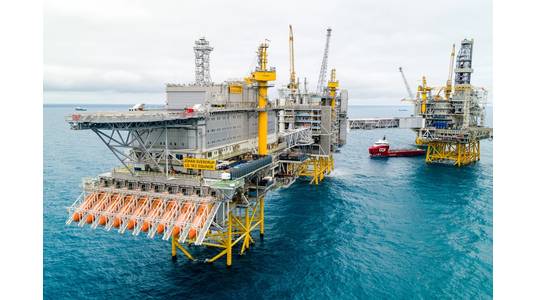
Norwegian offshore operator Equinor said Monday it will invest 50 billion kroner ($5.67 billion) over 10 years on a path toward reducing company-wide emissions by 40% through to 2030.
Using the EU’s 2005, rather the UN’s 1990 as a benchmark year, the company’s CEO, Eldre Saetre, said in a statement that further emissions reductions are planned beyond the coming decade, and that cuts of 70 percent were intended by 2040. Equinor aims to be” zero emissions” by 2050.
The company will rely on a supply chain which now appears ready to deliver the results of years of subsidy. From the foreign solvent-finding carbon-capture specialists to the long-range cable makers, Equinor says it has the support it needs to capture carbon and electrify offshore oil and gas fields from shore, until each, in turn, is phased out.
That phasing out now seems the core of the company’s zero-emission plan, and the company looks certain to earn on the carbon-emissions credits inherent in “more than five million tonnes of annual reductions” of CO2 from a company wide 13 million tonnes, the same today as it was in 2005.
“Large-scale industrial measures, including energy efficiency, digitalization and the launch of several electrification projects at key fields and plants, including the Troll and Oseberg offshore fields and the Hammerfest LNG plant” are, the company says, to be at the heart of the reductions. Cables from cheap, shore-based hydro electricity production are key to those plans.
Elsewhere, the company, its government shareholder and the supply chain have built test sites to sequester CO2 offshore and onshore and are nearing the day they can derive large-scale supplies of hydrogen for export, pending a market for the abundant gas. Key to sequestration and hydrogen-production are the company’s gas plants and refineries, as at Kaarstoe and Mongstad.
Equinor’s future offshore wind projects, meanwhile, are expected to benefit from existing subsea cables once offshore fields are decommissioned. Digitalization is seen playing a part in initiating the switch from current streaming out to oil and gas platforms and electricity coming back to shore or beyond for export.



